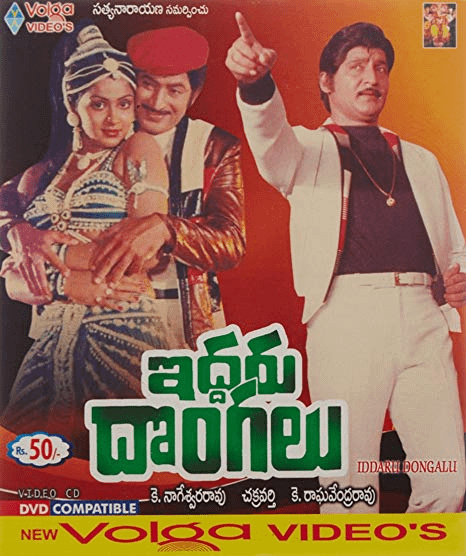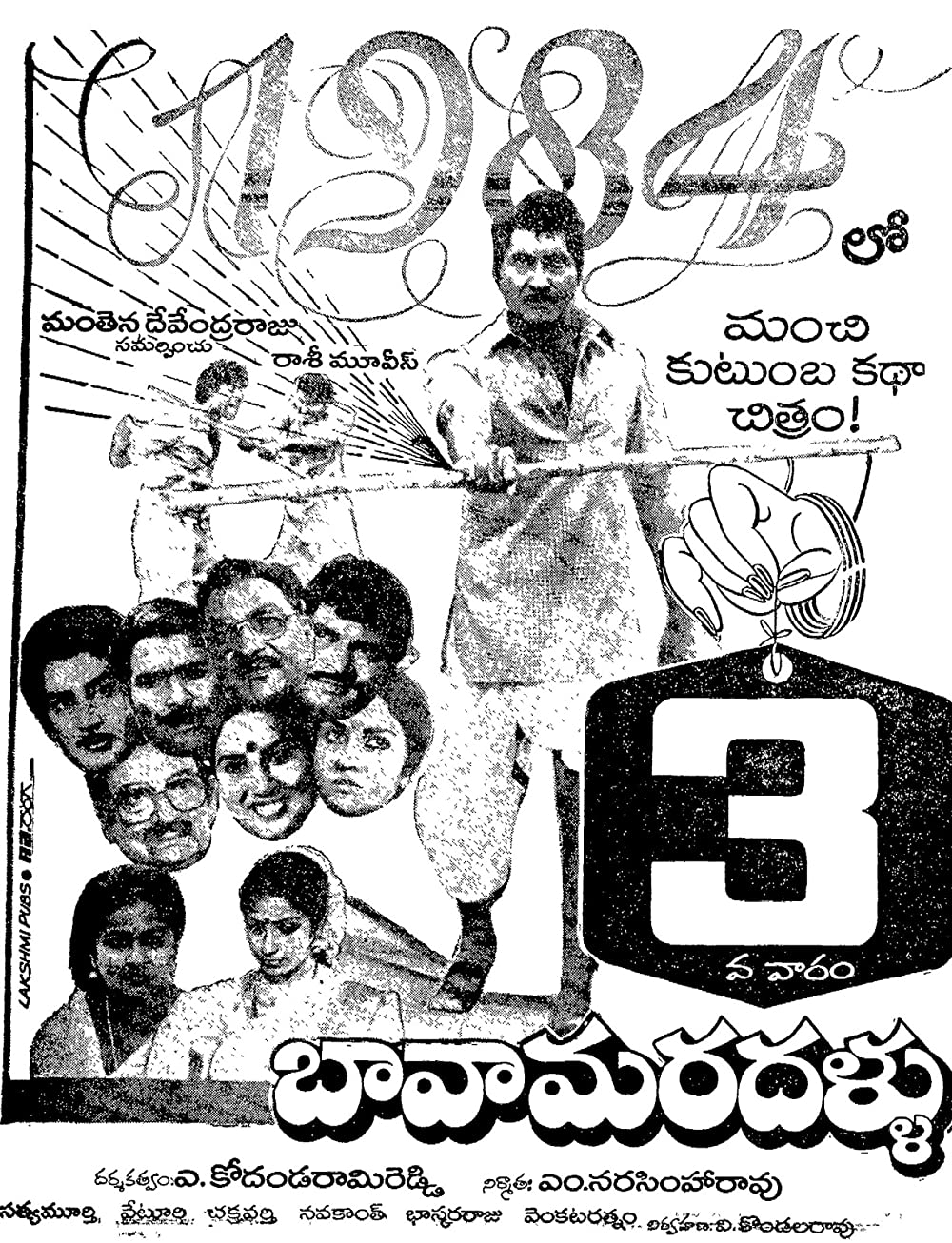Telugu Cinema Retro-1984
1984 would rank among one of the most turbulent years in modern Indian history, you had Operation Bluestar, which Indira Gandhi started against the Khalistani terrorists in the Golden Temple, leading to her assasination by her own bodyguards, followed by the terrible riots where Sikhs were targeted and killed. And the year ending with the Bhopal Gas disaster.You also had NTR being ousted by Nadendla Bhaskar Rao and then Governor Ram Lal, leading to widespread protests in Andhra Pradesh, and a long struggle that saw him regain his position back.
1984 was one important year for Telugu film industry, rather a turning point one could say. It was the year NTR as CM, introduced the slab system that would completely change the dynamics of movie making. In fact one could actually categorize Telugu cinema as before slab and after slab. Though the slab system would be repealed twenty years later by YSR, who introduced a taxation system, it's impact would be immense.
Slab System
The slab system would actually need a separate post by itself, but basically it was a fixed tax system, where by exhibitors would have to pay a fixed tax, irrespective of the occupancy. Prior to this, exhibitors would have to pay around 30% of the gross collections, leading to large scale misuse. It was a common practice by most exhbitors to show only 50% of the tickets sold, even when theater was houseful, reason why it was common for movies then to run 200-300 days. Under the slab system, exhibitors had to pay a fixed tax, around 8-15% depending on centres.
Now the slab system worked fine for stars like Krishna, Chiru whose movies always got good openings or if the movie went on to become a big success. But it hit the smaller, medium budget movies as they generally started with low occupancy, and relied more on WOM( Word of Mouth). It even hit stars like ANR, whose movies generally used to start with slow opening. As well as directors like Dasari, reason why he fought for it's abolition, fell out with NTR, and later was succesful in getting YSR to do away with this.
Also the slab system, bought in the concept of Gross and Shares, unlike before, where it was primarily Gross earnings. Basically Gross was the total collection in theater, while Net was based on Gross-(Theater Rentals +Tax). Also with Slab system, long running movies became lesser, theater owners would show movies, as long as they ran full, minute occupancy dropped, they were shifted out to other theaters or number of shows were cut.
TV and VCR
Another important development was the spread of TV and VCR, which had actually started with the 1982 Asiad Games, when Color TV slowly became popular. This was the time Video started to gain acceptance, the latest Telugu movie would be out on video within 2 weeks of it's release, often with very poor prints. TV till then seen as a luxury, began to spread in most middle class, upper middle class homes, and with VCR's available on rental, this audience segment began to stay away from theaters. This was also the time, when video libraries began to come up, in the main urban centers, which also had a good collection of Hollywood, Foreign cinema, which in a way explains why most new directors starting with RGV, were heavily influenced by them. Also there was this concept of video parlors, basically small rooms or shacks, where you could watch movies on VCR for a fee.
The slab system, spread of TV, VCR would heavily impact Telugu cinema, regular middle class, family audiences cut down on theaters. When the latest Telugu movie would be in video, in a couple of weeks, why bother going to theater. It did not help that most theaters then were terrible, often stuffy, smelly, filthy toilets, mosquitoes, bugs, people preferred to watch movies in the comfort of their homes.
Usha Kiran Movies
One of the biggest hits of the year was Srivariki Premalekha, a trademark Jandhyala comedy, that would set the template for his other movies. Light hearted romance, with a memorable bunch of supporting characters. The youth, family audiences flocked to theaters in large numbers to see this movie, which remains popular even now. It also marked the debut of Ramoji Rao as producer with his Usha Kiran movies banner. He followed this up with two more successes the same year Sundari Subbarao and Kanchana Ganga. Ramoji Rao had a smart strategy, make movies with second level stars, keep the production costs low, focus on content that worked well for a long time.
It also marked the transition of Telugu cinema to a post NTR phase, only movie of his that was released was a long overdue Srimadhvirata Veerabrahmendra Swamy Charitra that was successful. ANR's careeer as a hero was effectively over, he had an odd success in Anubandham, but it's clear his days were numbered. I guess he too knew it, and was just waiting for Nag to make his debut.
Sankranti is often where you have eagerly awaited releases clashing, and this time, it was a high profile clash, with Yuddham starring Krishna, Krishnamraju, directed by Dasari vs Iddaru Dongalu with Krishna, Sobhan Babu directed by K.Raghavendra Rao. Of these Yuddham was a flop, while Iddaru Dongalu went on to become a hit.
Krishna continued his successful run, even under the slab system, with his Kanchu Kagada, a period movie with a freedom struggle backdrop, becoming one of the year's biggest hits. He also had another big hit with Dongalu Baboi Dongalu, directed by K.S.R. Das, a desi Bond action flick complete with robots, wonder cars.
Sobhan Babu also had a good year, with Illalu Priyuralu, the Telugu remake of Masoom, running successfully, as well as Bavamaradalu at the start of the year, establishing him as the go to star for family movies.
The biggest success of the year was however Bobbili Brahmanna, one of the biggest hits in Krishnamraju's career, and among his more memorable performances. Basically it was his performance as Brahmanna, the village head, that made an impact among audiences, along with powerful dialogues by Parachuri brothers.
It was however not such a great year for Chiru, after the highs of 1983, he did have a couple of success with Goonda, Intiguttu and Rustom. His biggest hit though this year was Challenge, the second movie of his under Creative Commercials, based on Yandamuri's novel Dabbu to power of Dabbu. The novel concept of a hero taking a challenge to earn 50 lakh in 5 years caught on well among audiences, and good performances by Chiru, Suhasini, and a great soundtrack by Illayaraja contributed to the success.
Balayya shot into stardom this year with Mangamma Gari Manavudu, that went on to become a massive success, and would also mark the beginning of his succesful collaboration with Kodi Ramakrishna. Bhanumati's performance as Mangamma was another strong factor. While he had another success in Kathanayakudu at the end of the year, the rest of his movies that year were forgettable.
Among other non star movies that were a success this year was Swathi, a heroine oriented movie, with a memorable performance by Suhasini. In fact Suhasini emerged as the heroine of the year with successes in Mangamagari Manavudu, Challenge, Illalu Priyuralu and strong performances in movies like this.
Bhanupriya made her debut with Sitara, the story of a lady from an erstwhile royal family, who goes on to become a successful movie star. Vamsi's second movie after Manchu Pallaki, the movie was a success. Though her other movies in this year were a failure, Bhanupriya got noticed with her performance, looks, and she would soon go on to become one of the leading heroines.
1984 in many ways changed Telugu cinema, right from the slab system to the advent of TV, VCR. For audiences theaters was not the only entertainment, there was TV, Video Game parlors, Video, and this bought in a fresh set of challenges to movie makers. With family, middle class audiences keeping away from theaters, it was predominantly youth, college students, mass audiences who began to patronize theaters, leading to a change in movie narration and sensibility, which we will look at in subsequent posts.














